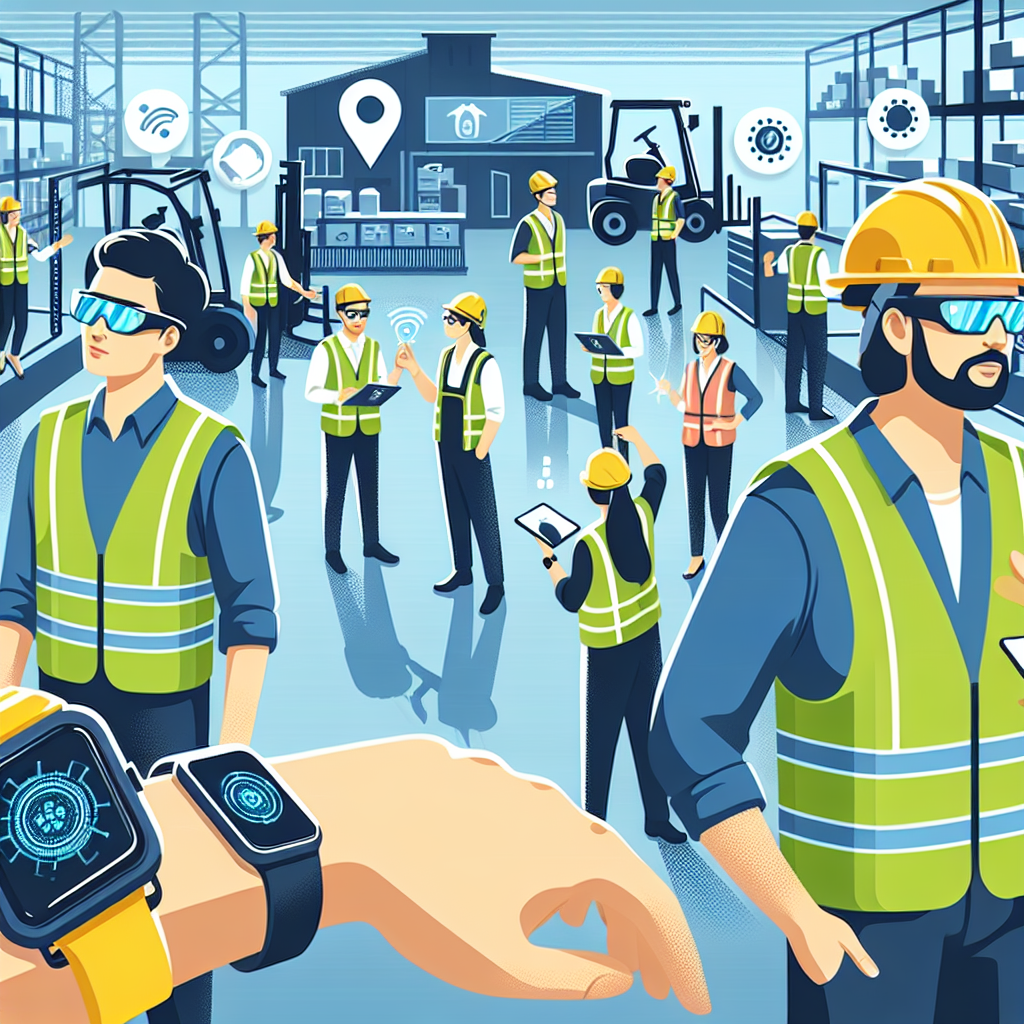Introduction
In today’s rapidly evolving industrial landscape, ensuring workplace safety remains a paramount concern for businesses across various sectors. The advent of wearable technology has introduced innovative solutions that significantly enhance safety protocols, reduce risks, and promote a secure working environment. This article delves into the ways wearable technology is transforming workplace safety, offering insights into its applications, benefits, and future potential.
The Evolution of Wearable Technology in the Workplace
Wearable technology, once primarily associated with consumer gadgets like smartwatches and fitness trackers, has expanded into the industrial sector with devices designed specifically for enhancing workplace safety. These advancements have been driven by the need for real-time monitoring, data-driven decision-making, and proactive risk management. By integrating sensors, connectivity, and smart analytics, wearable devices provide actionable insights that can prevent accidents and improve overall safety standards.
Key Applications of Wearable Technology for Safety
- Real-Time Monitoring: Wearables equipped with sensors can monitor workers’ vital signs, environmental conditions, and equipment status in real time. This continuous surveillance helps in identifying potential hazards before they escalate into serious incidents.
- Fall Detection and Prevention: Devices with accelerometers and gyroscopes can detect falls and unusual movements, triggering alerts that enable immediate response to prevent injuries.
- Heat and Radiation Exposure: Specialized wearables can measure exposure to harmful heat or radiation, ensuring that workers remain within safe exposure limits.
- Location Tracking: GPS-enabled wearables allow employers to track the location of their workforce, ensuring that personnel are accounted for and can be quickly located in case of emergencies.
- Augmented Reality (AR) Headsets: AR devices provide workers with real-time information, safety instructions, and hazard alerts, enhancing situational awareness and operational efficiency.
Benefits of Wearable Technology for Workplace Safety
Enhanced Situational Awareness
Wearable devices provide workers with immediate access to critical information, improving their ability to respond to changing conditions and potential threats. This heightened situational awareness can lead to quicker decision-making and more effective actions in hazardous situations.
Data-Driven Safety Strategies
The data collected from wearables can be analyzed to identify patterns and trends related to workplace accidents and near-misses. This analysis enables organizations to develop targeted safety strategies, address common risk factors, and implement proactive measures to mitigate potential hazards.
Improved Communication and Coordination
Wearables facilitate seamless communication between workers and safety managers. Real-time alerts and notifications ensure that relevant parties are informed promptly about any safety concerns, allowing for coordinated responses and swift resolution of issues.
Health Monitoring and Well-being
Beyond safety, wearable technology also monitors workers’ health indicators such as heart rate, stress levels, and fatigue. By keeping track of these metrics, employers can promote overall well-being, reduce the likelihood of accidents caused by exhaustion or stress, and foster a healthier workforce.
Challenges and Considerations
Privacy Concerns
The use of wearable technology involves the collection of personal and sensitive data. Organizations must ensure that they handle this data responsibly, safeguarding employees’ privacy and complying with relevant data protection regulations.
Cost and Implementation
Implementing wearable technology can be costly, especially for small and medium-sized enterprises. Organizations need to weigh the initial investment against the long-term benefits of enhanced safety and reduced accident-related costs.
Employee Acceptance
For wearable technology to be effective, employees must be willing to adopt and consistently use these devices. Employers should engage with their workforce, address any concerns, and demonstrate the tangible benefits of wearables to encourage acceptance and usage.
Future Trends in Wearable Safety Technology
The future of wearable technology in workplace safety is promising, with ongoing advancements poised to further enhance its capabilities. Innovations such as AI-powered predictive analytics, more sophisticated sensor integrations, and improved battery life are expected to drive the next wave of wearable safety solutions. Additionally, as technology becomes more affordable and user-friendly, widespread adoption across various industries is anticipated.
Integration with Internet of Things (IoT)
Wearables will increasingly integrate with IoT ecosystems, allowing for more comprehensive monitoring and control of workplace environments. This interconnectedness will enable smarter safety systems that can anticipate and respond to hazards in real time.
Personalized Safety Solutions
As wearable devices become more advanced, they will offer personalized safety solutions tailored to individual workers’ needs and roles. Customized alerts, adaptive safety protocols, and personalized health monitoring will enhance the effectiveness of safety measures.
Conclusion
Wearable technology is a transformative force in enhancing workplace safety, offering a range of tools that enable real-time monitoring, data-driven insights, and proactive risk management. While challenges such as privacy concerns and implementation costs remain, the benefits of improved safety, health monitoring, and operational efficiency make wearables a valuable investment for organizations committed to protecting their workforce. As technology continues to advance, wearable devices will play an increasingly vital role in creating safer and more productive workplaces.

Leave a Reply